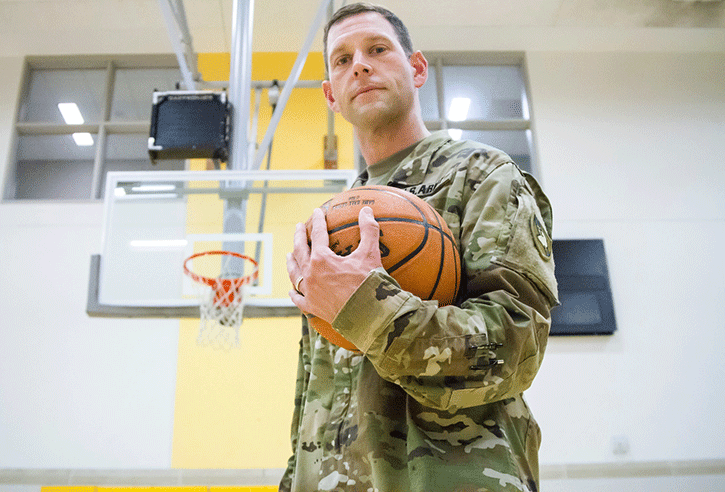
David Hughes earned his PhD in 2016. After graduation he continued his academic career on the faculty of the U.S. Military Academy at West Point.
In a college basketball, coaches make numerous decisions throughout the game, and deciding on the lineup for each minute of the game can have a profound impact. Coaches want to play their best lineup, but players battle fatigue. Coaches must develop different strategies to keep their players fresh.
David Hughes, a PhD student at George Mason University’s Volgenau School of Engineering, believes that one day the NCAA will approve heart rate monitors to be worn by players during actual competition; just like professional soccer and now major league baseball. When this happens, Hughes thinks basketball coaches will have access to live heart rate data which will help them decide which player(s) needs to be subbed out.
“Even though, the NCAA has not approved HR monitors for wear during games, the monitors can be used during practice,” said Hughes. “Using HR data from practice, my research seeks to determine the rates at which players fatigue and how quickly they recover when on the bench. This research will bridge the gap between current, sub-optimal substitution strategies and the optimal substitution strategy of the future.”
To determine the fatigue and recovery rates of each player, Hughes obtained data from a Division I basketball program that conducted four simple physiological tests using only a treadmill, heart rate monitor, and stopwatch. The four tests simulate the intensity a player would experience when playing against different defenses, such as man-to-man, zone, or full-court press.
One such test, measured the amount of time a player could sustain running on a treadmill at 9.8 mph (about a 6 min/mile pace).
“Every player that participated in this test had a unique time,” said Hughes.
Players that ran longer had a slower rate of fatigue, and players who had short recovery times had a faster rate of recovery.
What makes Hughes’s research unique is the math behind it. Hughes uses approximate dynamic programming, or ADP. ADP requires precise definition the states and actions. For his research, a state is the players that make up a lineup and their associated fatigue levels. The action is whether to change the lineup or keep it the same
“Using approximate dynamic programming, I’m able to determine the best action to take from any possible state,” says Hughes. “It is important to note that this ADP approach considers all possible future actions and states to produce a global optimum. That simply means that the decision recommendations from my model will be optimal over the course of the entire game.”
Hughes thinks sequential decision-making problems, like this, have parallels in many other fields. As a former U.S. Army Chinook helicopter pilot, he thinks this same methodology could be applied to develop a policy that recommended the optimal substitution strategy for when to swap a fatigued crew member or pilot.
After he graduates from Mason in May, Hughes will continue his academic and military career as an assistant professor at the U.S. Military Academy at West Point.
